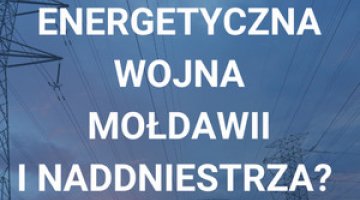Completion of work on the Romanian-Moldovan gas pipeline
On 7 August the Romanian Prime Minister Ludovic Orban announced the completion of the Ungheni- Chișinău gas pipeline. The new infrastructure, Orban has declared, is intended to enable the delivery of gas from Romania and other places to Moldova, and “give its inhabitants an alternative to Russian gas”. Currently, 100% of the gas Moldova consumes comes from Russia, and is supplied by a gas pipeline running through the separatist Transnistria. The pipeline, which has just been handed over for use, is 120 km long and connects the Romanian-Moldovan interconnector at Iași-Ungheni (built in 2014) with the Moldovan capital. Currently, its capacity is about 0.5 bcm per year. In January 2021, when the pressure control stations currently being built are activated, this should increase by a factor of three. Moldova’s annual consumption of natural gas (excluding Transnistria) is around 1-1.5 bcm.
Commentary
- The construction of the infrastructure linking Moldova’s and Romania’s gas pipeline systems is crucial for the former’s energy security. Moscow regularly exploits Moldova’s dependence on gas supplies from Russia to put political and economic pressure on Chișinău. This has led to a build-up of Transnistria’s gas debt to Moldova, which currently stands at more than US$7 billion. This debt has arisen because the unrecognised republic of Transnistria (with Russian acceptance) has not been paying for the gas delivered to it on the basis of a contract which Gazprom signed with Moldova.
- Although the construction work has been finalised, the supply of Romanian gas to Moldova will not start any time soon. Romania had planned to supply its eastern neighbour with gas from the Black Sea shelf, the extraction of which should have originally begun in the period between 2020 and 2022. However, the mining companies involved have halted most of their preparatory work following Bucharest’s adoption of unfavourable tax regulations in 2018. The energy crisis and the fall in gas prices caused by the ongoing pandemic, as well as the withdrawal of European institutions from subsidising investments in the gas sector linked to the EU’s environmental targets, have also contributed to the problem.
- Another issue concerning the efficient use of the new connector is the question of control over the Moldovan transmission system. Although the new gas pipeline and the interconnector are owned by Vestmoldtransgaz (a subsidiary of Romania’s Transgaz), the remainder of Moldova’s distribution network belongs to Moldovagaz, whose main shareholder is Gazprom, which controls 63.4% of the shares. The Russian monopolist should be expected to try and block any alternative gas imports into Moldova. This situation will only change after Moldovagaz is broken up in accordance with the EU’s Third Energy Package; this has not yet been achieved among others due to a lack of political will in Chișinău, as well as pressure from Moscow. Moreover, the current three-year contract with Gazprom expires at the end of this year, and there is no doubt that Moscow will try to use Moldova’s continued energy dependence to put more pressure on Chișinău.




